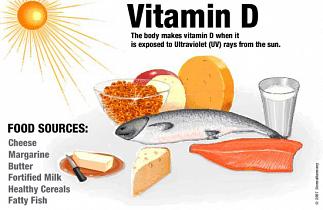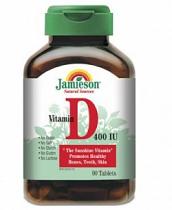Anti-Aging: Take Natural Souce Vitamin D, Avoid Synthetic Vitamin D
Drisdol and Calcitriol are synthetic forms of vitamin D2; the form of vitamin D typically prescribed by doctors. But this is not the type produced by your body in response to sun or safe tanning bed exposure. A recent
Supplemental vitamin D comes in two forms:
-- Ergocalciferol (vitamin D2)
-- Cholecalciferol (vitamin D3)
-- They have long been regarded as equivalent and interchangeable+ especially since a recognized vitamin D expert, Dr. Michael Hollick, recommended it. But that notion was based on studies of rickets prevention in infants conducted several decades ago. Today, we know a lot more about vitamin D, and the featured study offers compelling support for the recommendation to take vitamin D3 if you need to take an oral supplement—which is the same type of D vitamin created in your body when you expose your skin to sunlight.
-- According to the latest research, D3 is approximately 87 percent more potent in raising and maintaining vitamin D concentrations and produces 2- to 3-fold greater storage of vitamin D than does D2. Regardless of which form you use, your body must convert it into a more active form, and vitamin D3 is converted 500 percent faster than vitamin D2. Vitamin D2 also has a shorter shelf life, and its metabolites bind poorly with proteins, further hampering its effectiveness.
Unfortunately, vitamin D2—which is a synthetic version made by irradiating fungus and plant matter—is the form of vitamin D most often prescribed by doctors in the U.S. Hopefully this will change sooner rather than later.
As stated by Dr. Cannell in the featured article:
"While there may be explanations for D3's superiority other than improved efficacy, for the time being, these papers send doctors a message: use D3, not D2."
-- A meta-analysis of 50 trials looking at mortality rates for “doctor recommended” synthetic vitamin D2 supplements versus natural vitamin D3 shows a six percent risk reduction among those who used D3, compared to a two percent increased risk among those who used D2
-- Research shows vitamin D3 is approximately 87 percent more potent in raising and maintaining vitamin D concentrations and produces 2- to 3-fold greater storage of vitamin D than does D2. D3 is also converted into its active form 500 percent faster
-- Optimizing your vitamin D levels may be one of the most important steps you can take in support of your long-term health. The ideal way to do this is by exposing large amounts of skin to sunlight or a safe tanning bed, but if you need to use an oral supplement, make sure you’re taking vitamin D3
-- The most important factor is your vitamin D serum level, which should ideally be between 50-70 ng/ml. When taking an oral vitamin D supplement, you should take enough to reach and maintain this therapeutic level. As a generic guideline, adults need to take about 8,000 IU’s a day to reach this level
To optimize your levels, you need to expose large portions of your skin to the sun, and you need to do it for more than a few minutes. And, contrary to popular belief, the best time to be in the sun for vitamin D production is actually as near to solar noon as possible. During this time you need the shortest exposure time to produce vitamin D because UVB rays are most intense at this time. Plus, when the sun goes down toward the horizon, the UVB is filtered out much more than the dangerous UVA.
Just be cautious about the length of your exposure. You only need enough exposure to have your skin turn the lightest shade of pink. Once you reach this point your body will not make any additional vitamin D due to its self-regulating mechanism. Any additional exposure will only cause harm and damage to your ski
If appropriate tanning is not feasible, then you'll be wise to consider an oral vitamin D3 supplement. According to the most recent findings by Carole Baggerly, founder of GrassrootsHealth, her research of nearly 10,000 people shows the ideal adult dose appears to be 8,000 IU's a day to get most into the healthy range. Just remember to get your vitamin D levels tested regularly if you take an oral supplement.
Editorial note: Jamieson produced a natural source Vitamin D supplement.
Comments
There are 0 comments on this post















